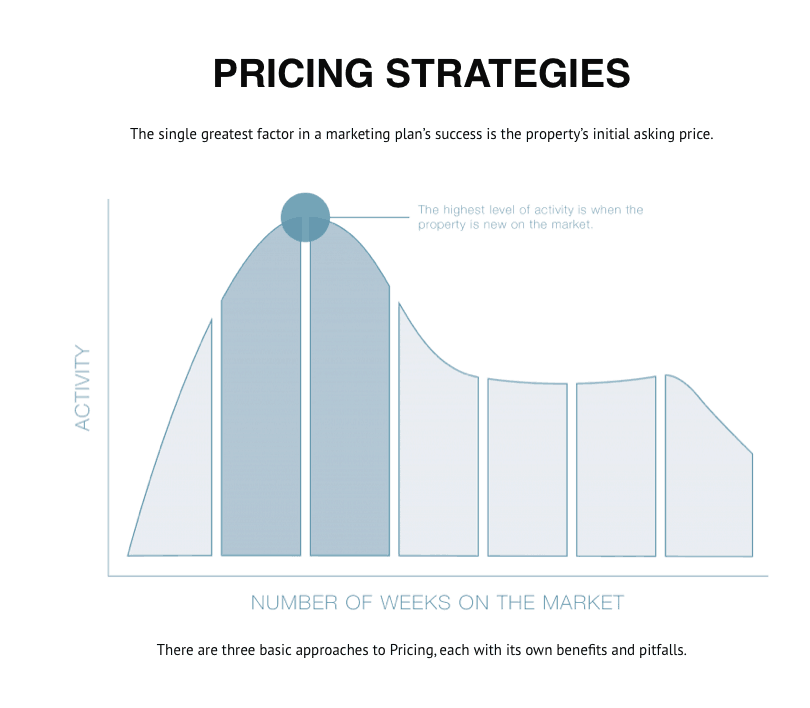One of the single greatest factors in a marketing plan’s success when selling your home is the property’s initial asking price. That’s because a property generates the most activity when it is still new on the market. As the weeks go by, interest wanes.
Determining the right pricing strategy for your home can help you sell your home faster and for the most money possible. Here’s how to determine the value of your home and the three basic pricing strategies your realtor can use.

Finding the Perfect Selling Price of Your Home
Your real estate agent will prepare a Comparative Market Analysis (CMA) to help you determine your home’s marketplace value. The CMA will compare your home to similar homes in your area that have sold within the last three to six months. The CMA will focus on homes with similar property features, and also take into consideration current market conditions and competition.
The CMA will provide you with a price range for your home. Once you know the price range, you will have to determine which pricing strategy to use. There are three basic approaches to pricing, each with its own pros and cons.
Strategy #1: Lofty Price
What is it?
The lofty price strategy is one in which the seller prices the home on the high end or slightly above the market value.
Works best when…
…the market is very hot, there are few properties listed for sale, and your property is in top-notch condition.
Advantages
With this strategy, the buyer has plenty of negotiating room when an offer comes in. It also lets the buyer feel comfortable knowing that there was no money left on the table.
Disadvantages
When a property is priced too high, many potential qualified buyers will be discouraged and choose not to view the property. This leads to the property sitting on the market for long periods of time. If not sold quickly, the seller will need to reduce the price to attract new buyers. Unfortunately, the price reduction is often as much as 10%.
Strategy #2: Market Value
What is it?
When using this strategy, you will list your property at what you believe it will sell for. This is typically in the middle range, even a bit to the low side, of the values determined by the CMA.
Works best when…
This strategy is best for buyers who want to encourage multiple offers.
Advantages
Using this strategy allows you to attract qualified buyers promptly. Because of the accurate pricing, buyers feel more pressure to act quickly before someone else can act. If multiple offers do occur, this strategy can sell for a price that was higher than the listing price.
Disadvantages
Some sellers worry that they could have sold the property for more. Others worry that by not going lower, there will be no “hype” about the property.
Strategy #3: Low Price
What is it?
With this strategy, the seller prices the home below market value. This is a great strategy to use if you want to create a lot of interest in a property.
Advantages
When using this strategy, interest is high and so are offers. Homes priced below market value get shown a lot.
Disadvantages
As with all pricing strategies, there are disadvantages to pricing low. You run the risk of only receiving low offers, of getting buyers who are qualified for a lower-priced home, or of being overlooked by buyers looking for a home in a higher price range or who do not want to participate in a bidding war.
The best way to decide which pricing strategy is right for you is to talk with an experienced real estate agent.
If you aren’t already working with an agent, one of our experienced agents will be happy to assist you to determine the best asking price for your home so it will sell quickly and for the most money.
